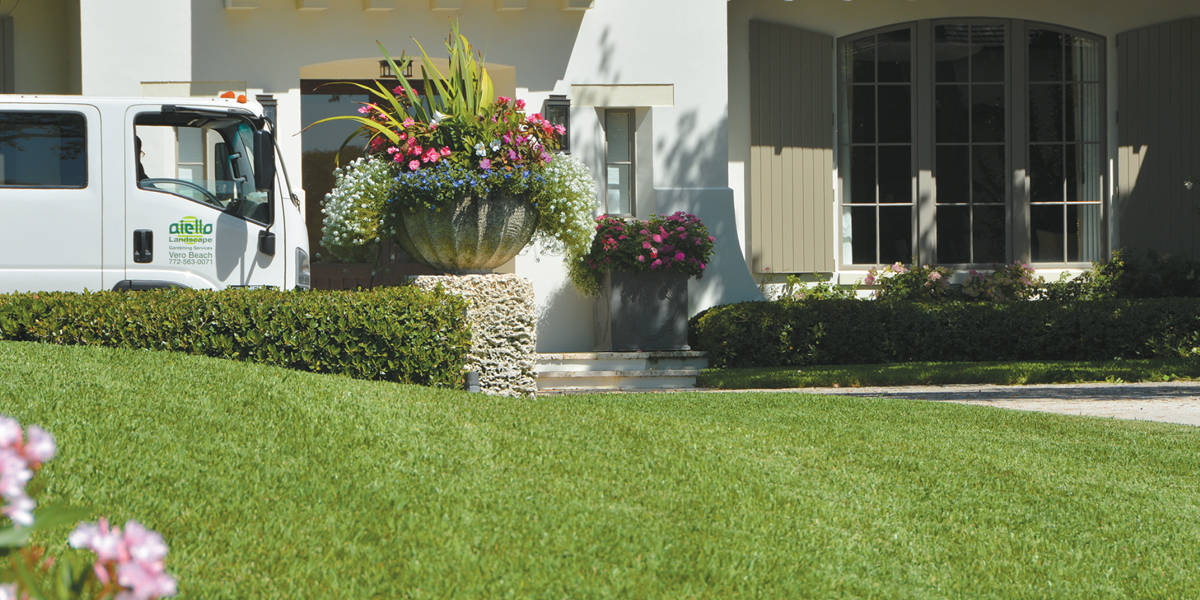Americans love lawns. According to NASA, there are more than 49,000 square miles of lawns in the United States. That’s larger
than the state of New York.
Our lawns are integral to our way of life. They’re where we teach our kids to throw and catch, or kick a soccer ball. They’re playgrounds for our pets. Lawns can also transport us from the daily rigors of life—so much so, that a 1914 New York Times headline read, “Roosevelt Cuts Grass – Disregards Politics for a Day and Pushes Lawn Mower.” With the privilege of enjoying these grassy spaces, we must understand the tradeoffs and best practices associated with proper lawn care, especially as we work to protect our prized Indian River Lagoon.
While lawns do stabilize sediment, they consume many other resources. They require water, fertilizer and pesticides. Adopting a few best practices will ensure your lawn is a “Lawn for the Lagoon.” First, start by cutting back on water. You can help your lawn be more drought tolerant by watering it less, which will force roots to grow more deeply. Most lawns will thrive on three water cycles of 25 minutes per week—less during winter and not at all during rainy spells. Responsible lawn care requires checking irrigation timers
and adjusting to accommodate changing weather patterns and seasons.
Second, adhere to fertilizer regulations. Fertilizer should never be applied near the lagoon or on any surfaces where it could be washed into storm drains. In addition, most fertilizers cannot be applied in Indian River County between June 1 and September 30, our rainy season. One should also consider natural-based fertigation systems that can deliver organic nutrients through the irrigation system.
Third, use an integrated pest management program, established by a licensed provider. Such a program will take into consideration multiple
factors to determine when pesticides should be applied as-needed and when for preventative measures. Ideally, pesticides should only be used as needed, but preventative applications can control a pest if accurately timed.
By following these best practices for irrigation, fertilization and pest management, you can have an environmentally responsible lawn that fulfills the American dream and gives you endless hours of enjoyment—relaxing or pushing a mower.

